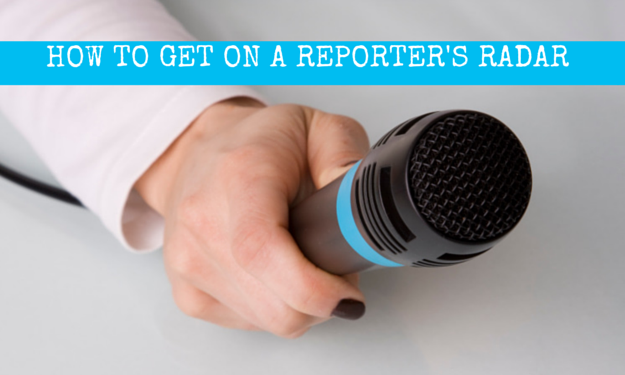Reporters have a hard job.
TV reporters walk into the newsroom at 9 a.m. and have to report on a story and have it on the air by 5 or 6 p.m. — and that’s if they have the day shift and aren’t waking up at 3 a.m.
Newspaper reporters have to juggle daily deadlines for tomorrow’s paper, plus work ahead for the weekend editions.
Radio newsrooms barely exist anymore, except for public stations.
Not to mention, readership declines, newsroom layoffs and corporate restructuring further complicate the profession.
With these challenges facing journalists, it’s easy to see why they can’t always cover the stories that we PR people pitch them. They can barely get through all their emails and voicemails and still meet their deadlines!
But if you know what reporters are up against, you can come up with creative ways to appeal to them by making their lives easier. Sometimes, the easier you make the story, the more attractive it will be.
How to Get a Reporter’s Attention
Here are four basic tips to get noticed by over-worked journalists, and some real-life examples to illustrate each point.Think like a reporter, not a PR person.
1. Think like a reporter, not a PR person.
When you’re excited about news at your company, you want reporters and the public to share in your excitement. But before you toot your own horn, think about how a reporter could use your information and anticipate what questions you will get asked.
Come up with preemptive solutions to the questions that you anticipate. Is there a way that you can provide your news to the media in a way that a news outlet is more likely to use it?
Real Life Example:
Recently, our client RE/MAX of Tennessee was proud to announce that their agents were included in a list of “Best Agents in America.” Instead of sending out a release about only our agents who made the list, we prepared an announcement that included ALL Realtors from ALL companies in the area who made the list.
We placed numerous stories by using this approach, and even garnered compliments from a local business writer. He told us that he wouldn’t have used release if we had only included our client. Because we thought about the story he would write, we got the coverage we wanted.
By thinking like the reporter, we achieved our short-term goal of getting stories placed and we achieved a long-term goal of establishing ourselves as smart PR people in the mind of this reporter.
2. Do as much work as possible, before you even send a release or pitch.
Reporters are stretched very thin these days. They are covering multiple beats, collecting their own photos/videos and posting their own content online.
When you have a great idea or something newsworthy to share, do as much of the reporting yourself up front, then pass all of the information over to the media. Don’t just come up with a great idea without following through with all the extra steps.
Real Life Example:
With Nashville Ballet, I knew that neighborhood newspapers in small towns across Tennessee would love to run news about their young dancers performing with the ballet’s professional company in Nashville’s Nutcracker.
I organized more than 150 young dancers by zip code so that I had a group photo of all children from that town (identified accurately), plus a release that included the child’s name, parents’ names, performance role and performance dates.
After at least 20 hours of data crunching, I had all 150 kids sorted and sent releases to their hometowns, which helped us hit the highest ticket sales in Nashville Ballet history!
3. Format your content so that it’s copy-able.
Once you have all the data for your release or pitch, and you have additional info in anticipation of reporters’ questions, it’s time to organize your release in a way that’s easy to use.
Reporters and editors will fact-check your information and gather their own quotes if they can, but they’ll appreciate being able to copy and paste even a portion of your release.
Here are some important tips for this:
- Write the release in AP Style since that’s what reporters use.
- Double-check your work for accuracy.
- Make sure the release is written well.
- Include the release in the body of your email. That way, reporters can quickly and easily pull the text for their stories.
This is especially important when working with small media outlets, like small town newspapers and locally owned radio stations. These outlets have limited manpower and face very busy schedules every day without the support of a larger organization providing content.
Real Life Example:
For RE/MAX of Tennessee, we wrote and distributed a short news release about a new office opening in Sevierville, TN. It included details about the new agents who would be employed there, the grand opening celebration and a quote from the owners. Portions of the release were excerpted for a business brief in the Knoxville News-Sentinel, the largest daily paper in the area.
By creating re-useable content that was easy for the business editor to copy and paste, we secured a story in our target location with the exact information we hoped to share.
4. Research, Research, Research.
Good PR people are in constant research mode. They are perpetually reading news and observing reporters for the next best opportunity.
Staying on top of what reporters are writing about means you will be able to jump in with a story idea if you see something relevant the reporter could use.
Here are some ways to do this:
- Consume the news every day for the outlets you want to target. Subscribe, watch, listen and read. Use RSS feeds, Twitter, Talkwalker Alerts and online editions.
- Pay special attention to the writers who cover your beats. See what stories they’re covering so you can learn what interests them. And, if you really want to get their attention, leave thoughtful comments on their stories and share them on social media channels.
- Stalk them a little. Follow reporters, editors and producers on Twitter. Friend them on Facebook if you have established a relationship with them. Many reporters look for leads or ideas on social media. Establishing a relationship with reporters on social media is a great way to be ready when opportunities arise.
Real Life Example:
We could all learn a thing or two from how Laura Click uses Twitter. For her own research, she created a “Nashville Media” Twitter list and made it public.
Following reporters across the city has helped her identify story opportunities based on what they’re tweeting. Turns out, local reporters are using her list too because it’s so comprehensive. She even had a reporter compliment her directly and say he used it every day.
With plenty of research and prep work, plus a little creative thinking, you can connect with journalists in these busy media times to get your story in their hands.
It’s Your Turn
What are your best tips for getting on a reporter’s radar? Have you tried any of these?




2 replies on “4 Creative Ways to Get on a Reporter’s Radar”
LOVE this post, Jan! I wish I could have seen you wrangling all those young dancers 🙂
Yes, that would have been something, huh? And yes, Jan killed it on this one! 🙂